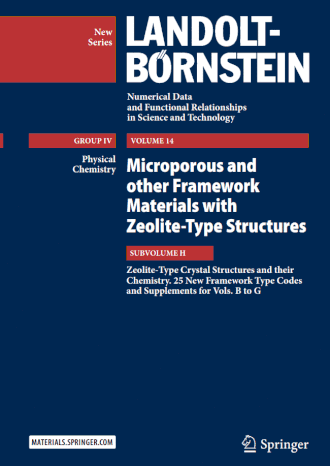Chemistry and Chemical Engineering: Major databases
Covers key library resources for chemists and chemical engineers who want to search bibliographic terms, chemical structures, chemical reactions, and physical properties or numeric data. Also includes software and collaborative tools as well as methods t
Major databases and reference works for finding properties and data
Major databases for finding properties and data
- ReaxysReaxys Xcelerate is a fully integrated electronic chemistry database that contains organic, inorganic and organometallic substance, property, and reaction data for small molecules housed previously in the Beilstein, Gmelin, and Chemistry Patent databases, as well as Reaxys medicinal chemistry. Includes coverage from 1771-present for 400 journals. Coverage also includes English language-only patents from the major chemistry patent classes of the U.S., European, and World Patent Offices. Reaxys Xcelerate is a premium version of Reaxys that allows faster analysis of results using visualization tools, automates synthesis planning, and uses flexible reporting outputs for sharing their results and annotations with colleagues.
- SciFinderSciFinder is the most comprehensive database for coverage of chemistry & chemical engineering. It has the world's largest collection of organic and inorganic substance information. The web version of SciFinder provides integrated access to CAPlus, CAS Registry, CASREACT, CHEMLIST, and CHEMCATS which are produced by Chemical Abstracts Service, and to MEDLINE which is produced by the U.S. National Library of Medicine. Sources covered in SciFinder include 10,000 journals, patents from 61 patent authorities, book chapters, conference proceedings, dissertations, evaluated reference works, technical reports, as well as book reviews and biographical information.
- SpringerMaterials Providing access to numerical and graphical data on the properties of materials from the Landolt-Börnstein New Series, the Linus Pauling Files and other integrated resourcesSpringerMaterials at materials.springer.com is a comprehensive database for identifying materials properties and covers data from materials science, physics, physical and inorganic chemistry, engineering and other related fields. SpringerMaterials was designed with a research focus on materials science, physics, chemistry, and engineering, and is supporting research and development in corporate organizations in the fields of bulk and fine chemical manufacturing, petroleum and petrochemicals, semiconductors and electronic materials, optical metals, ceramics, polymer synthesis and processing, and materials for fuels and energy application.
- Data citation indexIndexes research data, including data studies and data sets, and links them to the scientific literature to track data citation.
Major print reference works for finding properties and data
- Beilstein Handbook of organic chemistryPublication Date: 1779-1979The Beilstein Handbook of Organic Chemistry is one of the most comprehensive collections of data on the properties, preparation, and reactions of carbon compounds. It is organized by structure (acyclic, isocyclic, and heterocyclic compounds). Unlike Chemical Abstracts which tries to publish everything in chemistry, Beilstein is selective. The editors have published only critically reviewed data.The Beilstein Handbook of Organic Chemistry covers the literature from 1779 through 1979. In 1991-92, the Comprehensive Compound Name and Formula Indexes were published. These indexes cover all volumes of the Main Series (H) through Supplement IV (literature through 1959). These indexes are volumes 28-29 of the Beilstein Handbook. Starting with Supplement V, covering 1960-1979, Beilstein is in English. The online version of Beilstein is available via the Reaxys database.
- Gmelin Handbook of Inorganic and Organometallic ChemistryPublication Date: 1817-1998The Gmelin Handbook of Inorganic and Organometallic Chemistry is a comprehensive treatise that provides a collection of data in the fields of inorganic, organometallic, and physical chemistry. Also included are the areas of physics, metallurgy, geochemistry, mineralogy, and crystallography. The original source of the data is referenced. The text also includes tables of numerical data, curves, and other graphic material, including diagrams of apparatus. There are three basic parts to Gmelin, the Main Series volumes, Supplements to the Main Series, and a New Supplement Series. The set is shelved by the element symbol — consult the molecular formula index to determine which volume a compound is in. Selected data from print Gmelin is available online via the Reaxys database.
 Landolt-Börnstein: Numerical data and functional relationships in science and technology. Group VIII, Advanced materials and technologiesPublication Date: 2002-Landolt-Börnstein (LB) is a systematic collection of numerical data and functional relationships in physics, physical chemistry, biophysics, geophysics, astronomy, materials science, and technology. It is a valuable but often overlooked source of reliable physical data. Its full German title is Zahlenwerte und Funktionen aus Physik, Chemie, Astronomie, Geophysik und Technik. To browse all L-B volumes that are available online, see https://materials.springer.com/bookshelf
Landolt-Börnstein: Numerical data and functional relationships in science and technology. Group VIII, Advanced materials and technologiesPublication Date: 2002-Landolt-Börnstein (LB) is a systematic collection of numerical data and functional relationships in physics, physical chemistry, biophysics, geophysics, astronomy, materials science, and technology. It is a valuable but often overlooked source of reliable physical data. Its full German title is Zahlenwerte und Funktionen aus Physik, Chemie, Astronomie, Geophysik und Technik. To browse all L-B volumes that are available online, see https://materials.springer.com/bookshelf
- Key library links
- Reference shelf / softwareToggle Dropdown
- Article & patent databasesToggle Dropdown
- Syntheses & reactionsToggle Dropdown
- Data & properties
- Lab safetyToggle Dropdown
- Subjects: analytical, physical & theoretical chemistry resourcesToggle Dropdown
- Subjects: biological, inorganic & organic chemistry resourcesToggle Dropdown
- Subjects: energy, environment, & materials chemistry resourcesToggle Dropdown
- Last Updated: Dec 20, 2024 3:59 PM
- URL: https://guides.library.stanford.edu/chem
- Print Page
Subjects: Chemical engineering, Chemistry, Science and engineering
Tags: chemical engineering, chemistry, Science